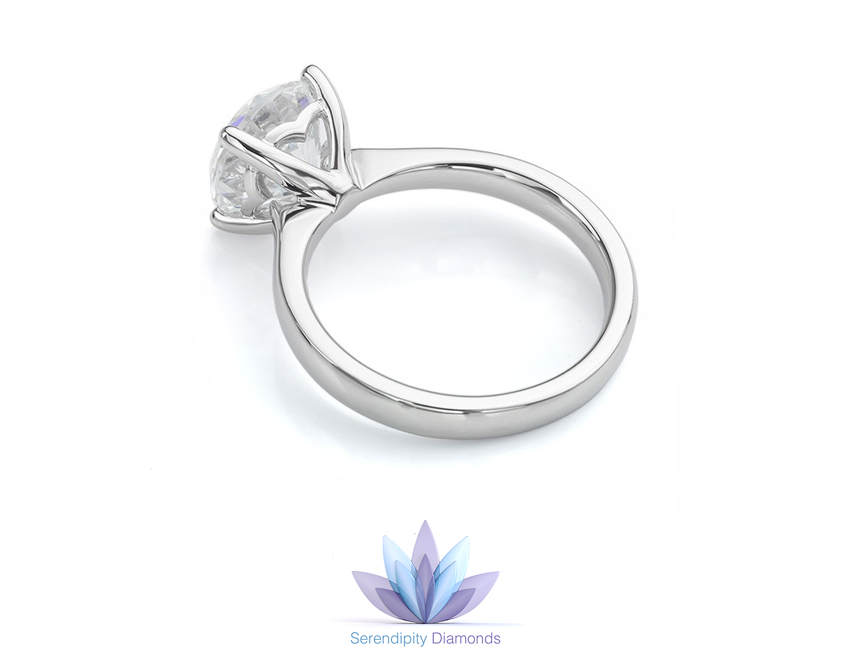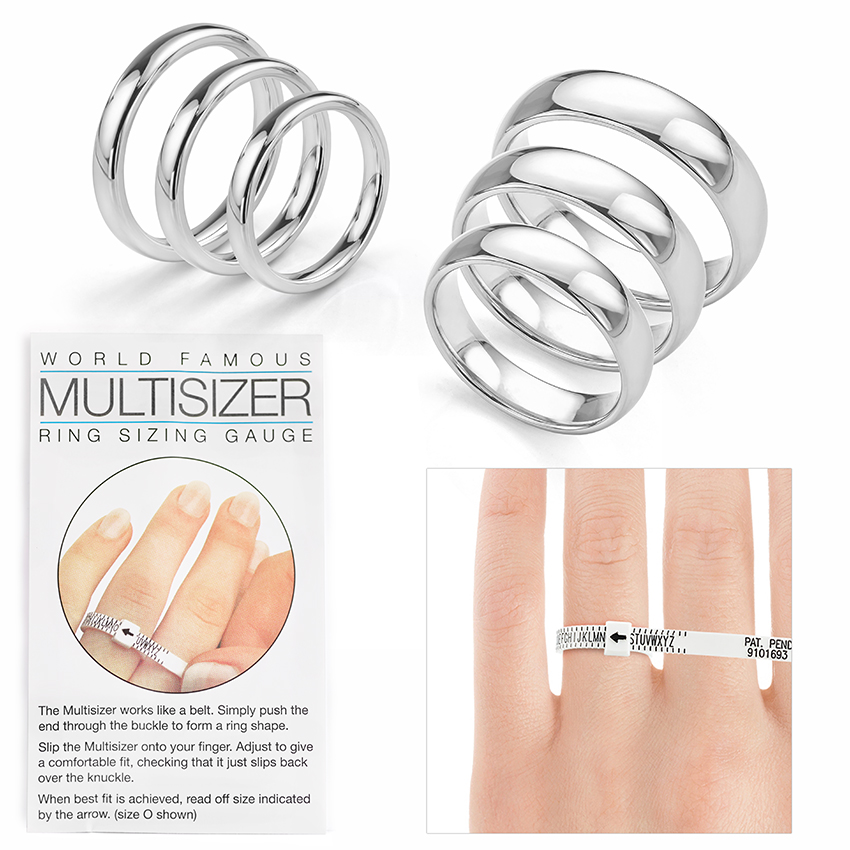Buying an engagement ring when you really don’t know her finger size
Over my 25 years in the jewellery industry, I have helped many buyers choose the perfect diamond engagement ring—despite total uncertainty about their partner’s finger size.
Just today, a young gentleman walked into our showroom and made this very statement.
“I need an engagement ring, but I have no idea what finger size she is…”
As a result, I decided to write a short post giving the same advice that I gave him, for what its worth…
Suggestion #1 – Choose a suitable ring style
First of all, choose a ring style that can be re-sized. Simple four claw settings or six claw settings are easier to secure following work to re-size a ring. Avoid tension or part-bezel settings.

A simple setting like the Lula engagement ring lends itself well to a size adjustment with its simple 4 claw setting and substantial band.
Suggestion #2 – Choose a precious metal that is easier to work
Platinum and 18ct Gold are both easier to re-size. Avoid Palladium which has a tendency to be more brittle, especially in the area where a ring has been re-sized. In addition, Platinum and 18ct Gold are more durable than alternative choices including 9ct Gold. Platinum is always a good choice. Another benefit is the natural whiteness of Platinum which will never tarnish in appearance.

Suggestion #3 – Don’t choose an engagement ring with a thin band
Make sure that your chosen design is not too thin behind the finger. When adjusted for size, the underside of the band can become fractionally thinner, so choose an engagement ring with a fairly regular 2.5mm wide band. Increasing the finger size of a ring, or reducing it usually removes metal. For this reason, don’t choose a band that is too thin around the finger.
Get the perfect size with our new ring size service.

Suggestion #4 – Select a midway finger size
Choose a ring size that is midway between large and small. This will be easier to size larger or smaller if the size is incorrect. We recommend a popular finger size such as UK size L, M or N for this reason. In addition, should you need to return the ring, a jeweller is more likely to be able to re-stock an average or midway finger size.

Suggestion #5 – Use a replica or ‘dummy’ ring
Proposing can be tricky. Getting the right finger size and style can be extremely difficult. For this reason, proposing a dummy ring makes a lot of sense. The final ring can be chosen together after the finger size is known. Admittedly, some buyers prefer to choose THE ring, but this process does work well for some people.
Suggestion #6 – Make sure your jeweller has your back
Talk to your jeweller before you make any purchases. Make them aware of the situation and ensure that they will support any changes or re-size work even if there is a cost involved. Better to have this discussion before you make your purchase so that they are fully aware of your own circumstances. For your own peace of mind, seek additional peace of mind from getting after-sales help from your jeweller.
About Mark Johnson
My name is Mark and I'm founder at Serendipity Diamonds. I have 30 years or experience in polished diamonds and jewellery. Today, I work with an expert team in our Isle of Wight jewellery showroom located in Ryde. Most of my work involves helping clients in our showroom, working on our two websites and photographing jewellery commissions.



